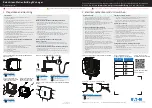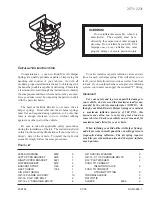
Inspect and clean out the drain
holes in the bottom of the doors
and body.
Check the floor coverings for
dampness. Carpeting and floor
mats may remain damp for a long
time, especially in winter. This
dampness can eventually cause
the floor panels to corrode.
Body repairs can affect your car’s
resistance to corrosion. If your car
needs repairs after a collision, pay
close attention to the parts used in
the repair and the quality of the
work.
Use a high-pressure spray to clean
the underside of your car. This is
especially important in areas that
use road salt in winter. It is also a
good idea in humid climates and
areas subject to salt air. Be careful
of the ABS wheel sensors and
wiring at each wheel.
Make sure the repair facility uses
Honda replacement body parts.
Some companies make sheet metal
pieces that seem to duplicate the
original Honda body parts, but are
actually inferior in fit, finish, and
corrosion resistance. Once installed,
they do not give the same high-
quality appearance.
When reporting your collision to the
insurance company, tell them you
want Honda parts used in the repair.
Although most insurers recognize
the quality of original parts, some
may try to specify that the repairs be
done with other available parts. You
should investigate this before any
repairs have begun.
Take your car to your authorized
Honda dealer for inspection after the
repairs are completed. Your dealer
can make sure that quality materials
were used, and that corrosion-
preventive coatings were applied to
all repaired and replaced parts.
Have the corrosion-preventive
coatings on the underside of your
car inspected and repaired
periodically.
Body Repairs
Corrosion Protection, Body Repairs
Appearance Care
214
















































